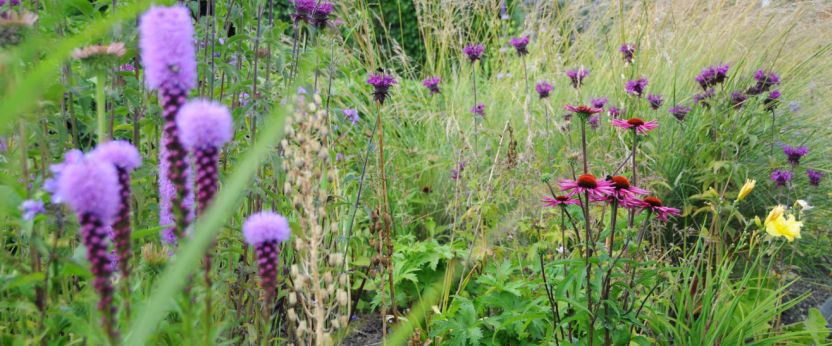Preparing and planting your perennial border
Are you going to plant a new border? Then thorough preparation is very important.
Depending on the existing situation and the target image, specific measures may be required.
Feel free to ask about this when requesting a quote.
Soil sample analysis
Not sure which soil you are dealing with? Do you doubt whether all nutrients are sufficiently present?
Then we recommend having a soil sample analysed before planting/creating. The chemical composition of the soil - together with its structure and soil life - will determine whether a soil is suitable for a certain type of planting.
Soil preparation
Clear soil of root weeds such as horsetail, hedge bindweed,...
Loosen soil well: air is one of the most important requirements for good root growth
Embed and cover with stable materials such as gravel, sand, pebbles, dolomite or lava, only if necessary.
Possibly add certain nutrients to the soil, make it more acidic or calcareous if soil analysis shows this to be necessary.
Optional:
Mulching (=applying cover) with inert materials (see next point in this info sheet)
Mulching is not a necessity. But if you would like to cover the soil, it is best to do this before planting.
A covering layer makes maintenance easier, provides an insulating layer in winter and prevents compaction of the soil by treading.
- Interesting in non-ground covering plantings
- Lava, gravel, pebbles, coarse sand, dolomite. In other words: any inert material
- In the case of lava: 7 cm thickness to be applied after planting or before planting
(in combination with our planter)
- Planting is done with the root ball half in the ground if no lava has been applied yet
- Planting with our planter if lava is already applied
Planting period
Always dependent on weather conditions! In doubt about planting? Feel free to ask us for advice.
- Spring
- Autumn







